What’s with millennials’ obsession with tattoos?
Seeking an explanation behind this ever-growing trend
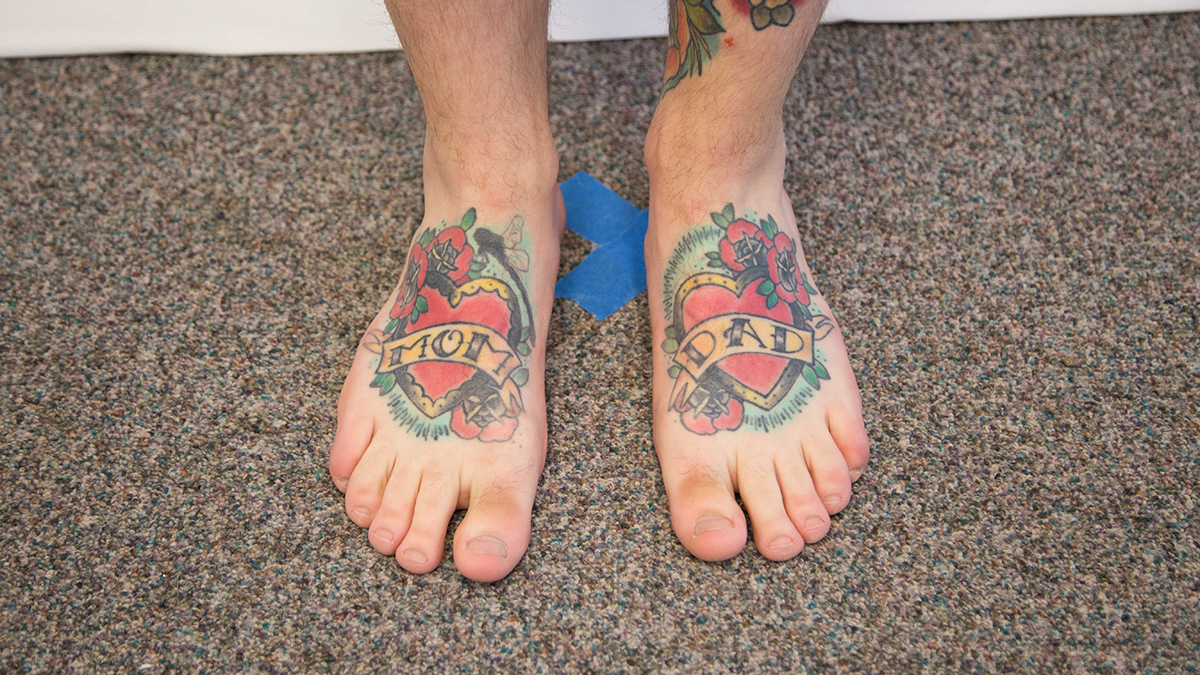 Joshua Storie
Joshua StorieCarl Casedo loves his ink. The 20-year-old has nearly two armfuls of it: his left shoulder features a roaring Chinese guardian lion, and his right a black-and-white portrait of a young woman encircled by gentle barn swallows. Casedo speaks measuredly and passionately when talking about their meaning. Among the images are tributes to his mother, a favourite band, and his culture.
“I love them,” he smiles, even though he doesn’t have a definitive reason as to why he decided to decorate himself in the first place. “It was just my decision (to get tattoos). And I do get some people questioning that, but in the end, my body is my body.”
Casedo is one of millions of young people who are choosing, increasingly, to opt into permanent body art. Tattoos are an ancient art form, but lately experts have been pointing to a specific, intriguing group of patrons who are causing a notable swell in the industry: the notorious post-1982 demographic known as millennials.
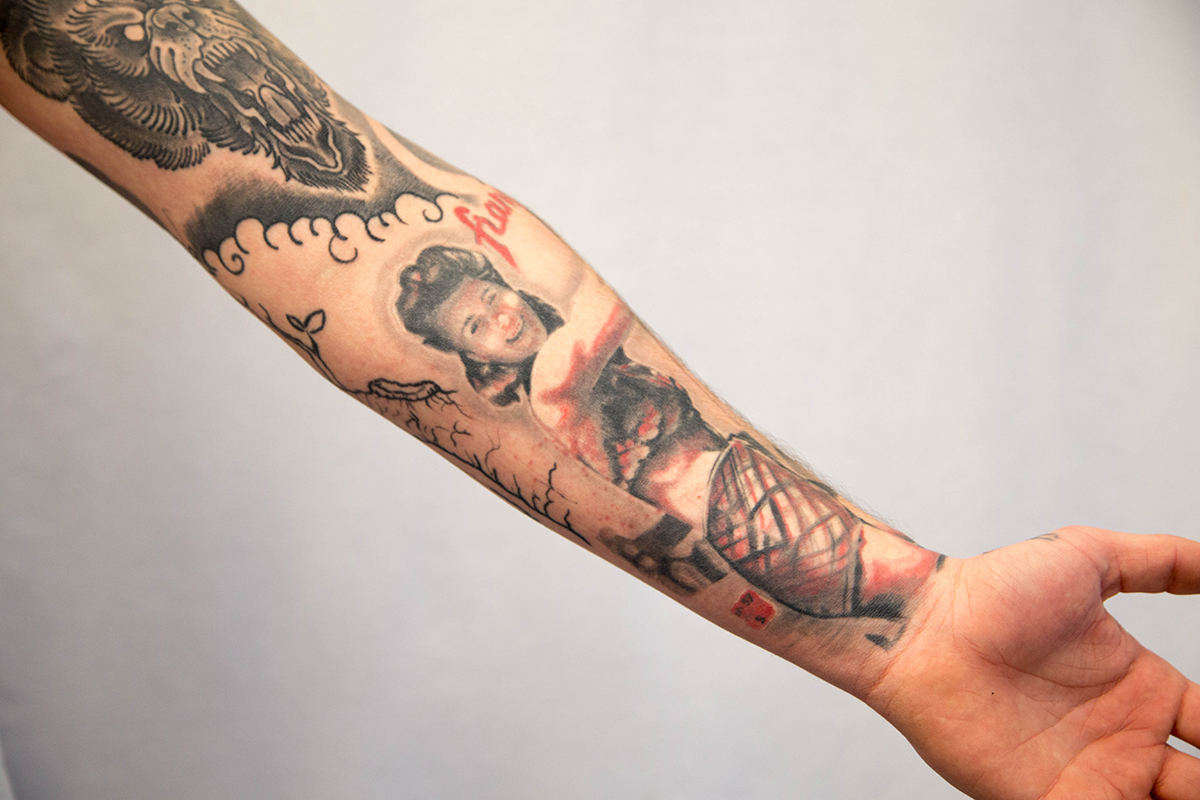
It does seem that millennials, more than any other group of mainstream consumers, are obsessed with tattoos. Once reserved for indigenous tribes, soldiers, sailors, punks, and ex-convicts, tattoos have skyrocketed in popularity. Health food supermarket chain Whole Foods seriously considered installing tattoo parlours in its format “365” stores in an effort to entice millennial shoppers. The United States Navy has changed its body art policies to allow for more and larger tattoos in the hopes of drawing in more millennial recruits. In 2010 about 40 per cent of millennials had at least one tattoo and that number has increased in the last six years. Young Instagram and high fashion runway models are often spattered with tiny, artsy tattoos. What could have caused the tattoo business to become one of the fastest-growing industries in North America with an enormous client base of young people?
According to famed American tattoo artist Megan Massacre, a shift in the way tattoos were perceived occurred around the same time reality shows like TLC’s 2005 hit Miami Ink that normalized — and dramatized — the once-subversive experience of tattooing and being tattooed hit airwaves. The exposure of tattooing to mainstream media channels marked a change — instead of being the mark of social degenerates, tattoos were suddenly desirable, cool, and sexy. And, Massacre notes, the increasing number of inked musicians and sports players certainly helped: think Rihanna, Cara Delevingne, and Ed Sheeran.
The trickle-down effects of the change in perspective jump-started by these factors resulted in a widespread increase in tattoo acceptance, which can be seen in localities the world over—Edmonton included. But there are more factors at play than TV and simple celebrity influence. Tattoos have been deeply meaningful for millennia, but their value hasn’t diminished over time. Instead, younger generations are finding ways to adopt tattoos and reshape the connotations of inked skin in the process. There are many reasons why millennials are flocking to tattoo shops seemingly en masse. Turns out tattoos aren’t really just skin deep.
***
One study conducted by the professors at the University of Arkansas found that tattoos may be important because, at their core, they signify a means of cementing the permanence of identity. Co-author Dr. Jeff Murray said at the time that tattoos do more than merely showcase facets of an individual’s identity: rather, they anchor, cement, and stand for the entirety of that identity. Even when everything else about the world right down to the body changes, tattoos are constants. They assure a link to the past.
The need for that kind of anchor has been exacerbated by the overload of constant changes in the environment that millennials in particular are challenged with facing on the daily. Since millennials are more wired in that any other generation before them, their world is the one changing the most frequently. Millennials are constantly bombarded with the newest social media platform, the latest trends, and the newest films via phones, laptops, tablets, and various other screens day in and day out, moulding the demographic to adapt quickly to rapid change. That said, all those changes can take a toll on the mind, and Murray seems to suggest that it can be comforting for a millennial tattoo wearer to know that the design etched in their skin will remain with them forever.
Murray’s theory is widely echoed by tattoo enthusiasts like Casedo. “It’s an expression of oneself,” he explains. “It doesn’t reflect the whole person, but it says something about them for sure.”
***
Technological advances in tattooing has also contributed to its booming popularity. Stringent health regulations and inspections have made it safer to pop into a clean, sterilized shop for a session; developments in tattoo ink and techniques have managed to dissuade the fears of some would-be collectors. If you shirk away from permanence, you can get a bloodline tattoo. If you’re worried about whether or not you’d like a visible tattoo, consider blacklight (“invisible”) or white tattoos. Now, there are designs and artists and styles of tattoos for everyone who wants one, which leads to more people per year opting to get inked. Since younger people are generally more willing to take risks, it stands to reason that millennials are more receptive to these new techniques than their parents.
Though tattoo techniques and designs are always coming into and out of fashion, certain trends seem to have more popularity among millennials in particular. “The new trends I’ve seen become popular in the last few years are single needle and fine line tattoos, geometric, watercolour, and micro (small) tattoos. I absolutely love the look of them and I’m very eager to learn and master those styles of tattooing,” says Shaena Bunce, a 22-year-old Edmonton-based tattoo apprentice.
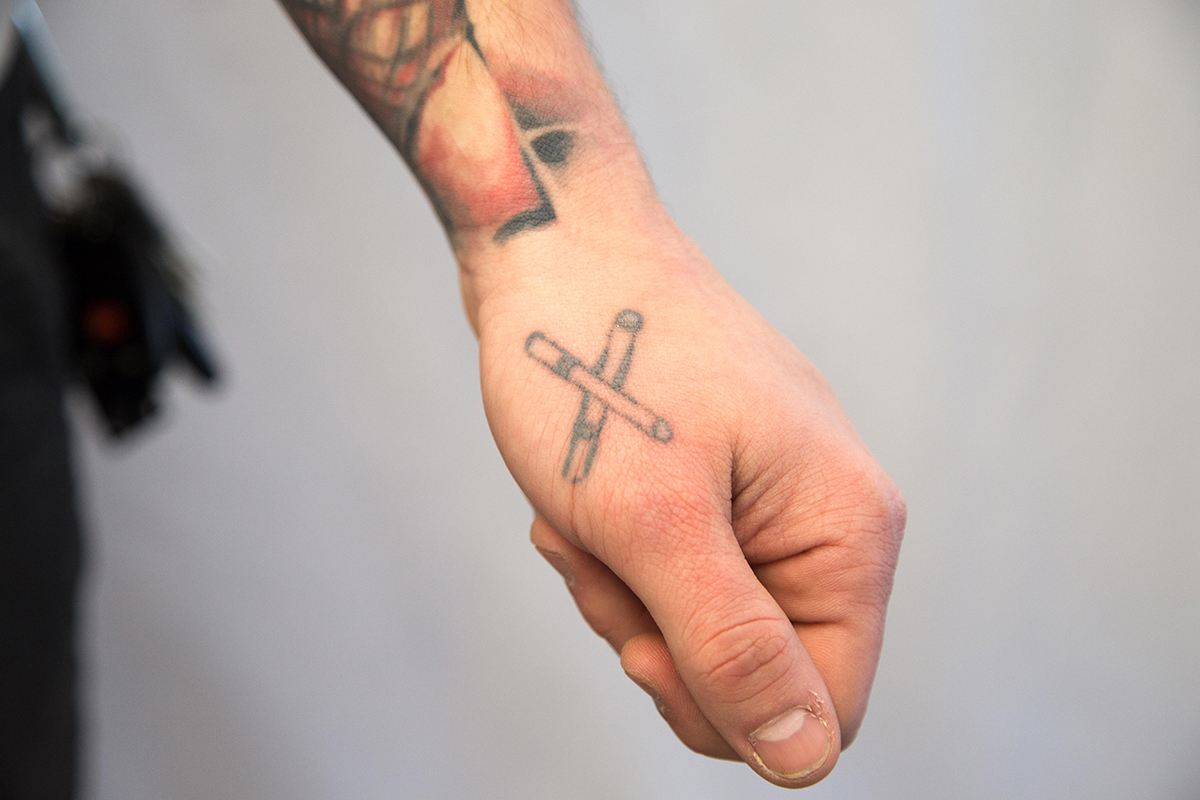
Another thing to consider is the increased availability — and visibility — of tattoos. “When I first started tattooing, I remember the only way you could see other tattoos and trends was the either go into a shop and look around, or look at magazines,” says Erin Storm of Edmonton’s own Bombshell Tattoo. “Now, with Facebook, Instagram, and social media, it’s so much easier to find tattoos. You can get an idea of the trends coming and going in tattooing — little Pinterest tattoos and things like that — from social media and the internet much more quickly than in the past.”
The “Pinterest tattoos” Storm mentions don’t seem to be going anywhere, either. Mac Plant of Little Buddha Tattoo says he’s noticed “simple white girl tattoos” — dream catchers, flying birds, and the like have become the most popular requests in the shop lately. “And compasses,” he says. “Compasses are a big one lately.”
Bunce has seen the effects of tattoo availability on social media on the demographics of her own clientele. She runs an active tattoo-focused Instagram account, where she posts photos of newly drawn designs and freshly inked clients, which acts as free advertising to anyone looking for an #edmontontattoo. “(My clients) are mostly people around my age because they’re my friends and acquaintances and they follow me on social media. I also get a lot of female clients, I guess because my drawing style is a bit more feminine,” she says.
Plant agrees. “I’d say we see mostly clients in their mid-twenties, early thirties — though we see some young, some old, so it probably averages out to about (people in their thirties),” Plant says. “We do tend to see more millennials in general, though.”
But even though tattoos are experiencing a serious surge in popularity, there are some signs the tattoo frenzy may not quite have everlasting staying power with the younger set.
With more tattoos, after all, there’s more potential for tattoo regret. And for every person who comes away from the chair ecstatic with their new ink, there’s someone who immediately begins questioning their judgement after seeing their fresh PewDiePie Brofist tattoo. Harry Styles, Justin Bieber, and Jennifer Lawrence are just a few prominent celebrities who have voiced regret about certain designs on their bodies. And they’re not alone: the frequency of tattoo removal procedures has increased by almost 46 per cent in the last few years. According to a survey conducted by the British Association of Dermatologists, close to one-third of the people who get tattoos regret at least one in their collection. On top of that, there’s a pronounced glut of people who regret the tattoos they got when they were 18 to 25 years old: 45 per cent of survey respondents said the ink they wanted to get rid of most was art they got in the period of their life most characterized by youth and impulsivity.
It’s harder to find data on millennials who regret their tattoos, since the majority of the generation is still living through that period. But among the older set, it’s significantly easier to find tales of those who wish they hadn’t gotten that Sagittarius tattoo when they were 19.
A 42-year-old mother of three confided that she had grown to dislike the sorority ankle tattoo she had received with her sisters as a 20-something University of Alberta student many years ago. Though it’s small, she wishes she had never gotten it in the first place: “It just doesn’t fit with who I am anymore.”
***
Tattoos are inherently expensive: clients pay not only for art generated by a human artist, but also the cost and time of applying that art to a living canvas. Often clients like to have custom art — as opposed to “flash,” or pre-done art already drawn by the artist — created just for them to add to the specialness of the tattoo, so that adds additional time to an artist’s bill. Art ain’t cheap, and you get what you pay for. These sentiments apply to tattoos, too.
An hourly session in Edmonton may cost around $100, but an hour of a celebrity tattoo artist’s time can cost up to $700 CAD, according to a quote from NYC-based shop Bang Bang, an establishment that’s been graced by the likes of Miley Cyrus and LeBron James. Given that full sleeves, large back pieces, or expansive leg designs can take many hours to complete, it’s not hard to imagine tattoos are investment pieces with investment price tags. Add to that the cost of aftercare products and ongoing shielding against sun and fading, and the true cost of tattoos become apparent.
Good tattoos may be expensive, but they are not nearly as costly as the price of having bad art removed. Tattoo removal and the complications that come with it are not to be taken lightly. While it can cost hundreds to thousands of dollars to get a clean, well-crafted tattoo, it costs way, way, way more — sometimes four or five times the cost of the original tattoo — to have an intricate design lasered off for good.
Laser removals aren’t easy procedures either. Second Skin Tattoo Removal, a laser removal firm in Edmonton, notes that while every tattoo is different since the number of sessions depends on the age, colours, and volume of ink deposited inside the skin for the tattoo, multiple sessions are almost always needed. These are spaced about two months apart from one another to break up tattoo ink sufficiently enough for the design to be permanently erased. The whole process can be painless for those with access to tattoo removal performed by trained medical professionals, but more often than not those looking to have their tattoos lasered off go to spas for the service. If the procedure isn’t done by a doctor with access to anesthetic, the removal process can be painful: with concentrated laser pulses searching for and breaking up tattoo ink, discomfort is inevitable. Second Skin describes the feeling of undergoing laser tattoo removal as a “burning sensation,” which is none too inviting. Combine that with the risk of scarring and it’s understandable why the prospect of going through this ordeal might dissuade some from getting inked.
***
Pain is an unavoidable part of the tattooing process. It’s also a powerful turn-off for many when it comes to tattoos. Even if someone is in love with the design they’ve chosen, the fear of pain might dissuade some from getting inked. Having tiny needles drilled two layers deep into your skin hundreds or even thousands of times per minute isn’t a painless experience, and for some people, having what’s sometimes described as a “long, slow cat scratch” for hours on end just isn’t worth having a permanent design etched into their skin.
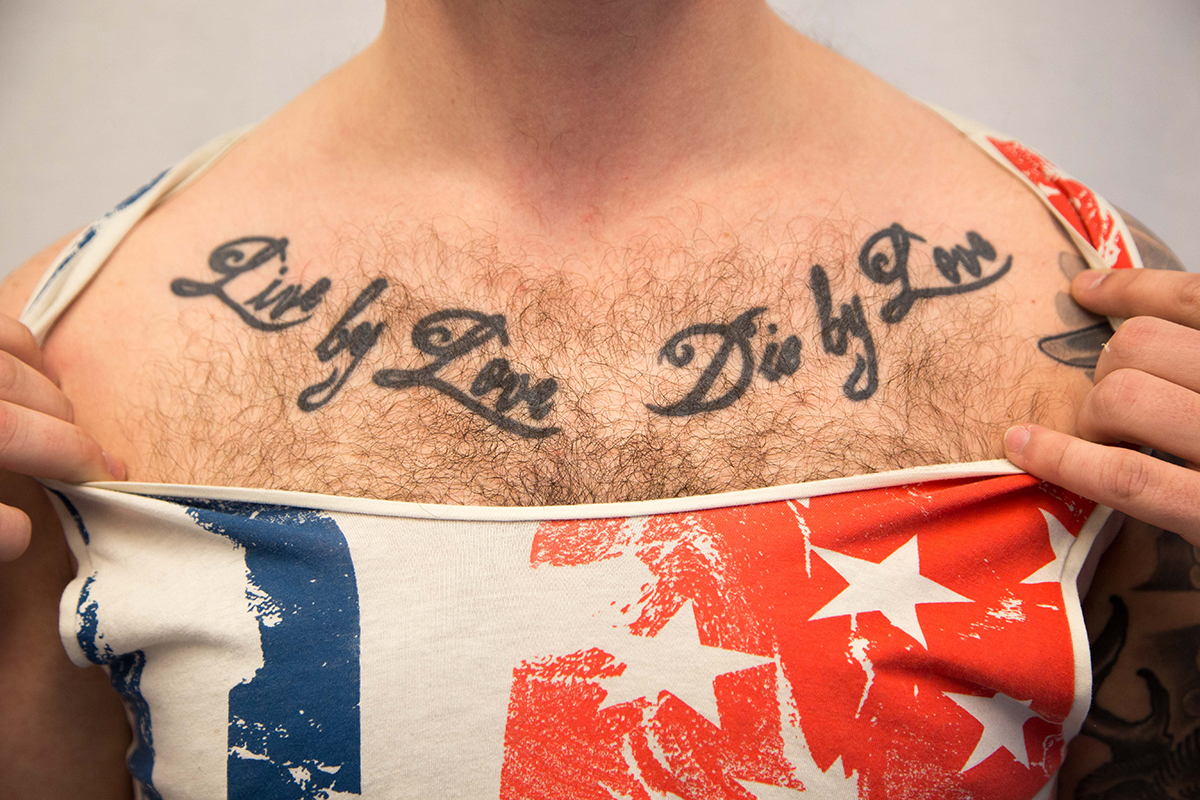
Although skin can be numbed with specialized gels and creams, the shock to the skin when the product wears off and the additional time delays such processes introduce to the tattooing procedure (think of the time it takes to apply the product, have it take effect, get tattooed, have to reapply when it wears off, wait again for the product to numb the skin, et cetera) means many tattoo artists discourage their use and reconsider getting tattoos if the pain will be an issue.
“Numbing agents work all right on smaller tattoos, but since they wear off after about 30 minutes, they really don’t do much for larger pieces,” Storm says. “They also change the consistency of the skin, so that can make things heal a bit oddly.”
It’s a well-established sentiment among tattoo artists. According to local tattoo shop Atomic Zombie, the issue with topical numbing agents is that the distortion they induce in the skin “confuses” the lines of stencils — the temporary copy of the tattoo design placed on the skin and used as a guide for the artists. A distorted stencil can result in a warped tattoo, and that means trouble for both the client and the artist. In other words, there’s a reason why artists urge people who want tattoos but can’t take the pain to pursue other forms of self-expression.
***
And then there’s the highly debated career factor: having visible tattoos is still often seen as undesirable, particularly for white collar jobs, so while millennials are certainly getting more tattoos than the generations before them, they’re still conscious of the risks. According to a survey conducted by Pew Research Center back in 2010, 70 per cent of tattooed millennials at the time made sure their tattoos could be hidden with the right clothing for that very reason — lest they would have had to endure the troublesome removal process. Despite the increasing popularity of tattoos and the gradual dissolution of their negative stigma, a lot of jobs that involve client-customer interaction still require that tattoos be covered up on the clock. The reason? Unlike clothes, hair, jewelry, and other forms of self-expression, tattoos cannot be adjusted: it’s either covered up or visible.
“What it really depends on is the profession, the industry, and the philosophy and culture of the company,” says Dale McNeely, the Director of the Business Career Services and Cooperative Education Program at the University of Alberta. “That’s what has the most impact on the acceptance or concern a company has with tattoos. But when someone is going to be hired to be a representative of that company — being the face of the company, meeting client and customers — the company has a legitimate concern thinking, ‘Does this tattoo image accurately represent my company to clients? Would we put that on our website, our letterhead?’ Sometimes they’ll decide that certain tattoos are not suitable.”
Some workplaces are slower to jump aboard the tattoo acceptance mindset than others. Overall, there’s been a general shift toward more acceptance of self-expression in the workplace, but placement still matters: tattoos on the hands, neck, and face are complete no-no zones in certain professions and firms, McNeely notes. He’s right: tattoos in these areas known colloquially as “job-stoppers” among tattoo artists, who will often refuse to tattoo those areas on clients who aren’t already sporting a considerable amount of body art. But, McNeely says, there are other places in which such expressions of self are accepted and even celebrated: in the arts, for instance, or in music.
“Ultimately, the employee is a reflection of their firm and the values of the company where they work,” McNeely explains. “In industries where employees have a lot of face-to-face interaction with clients — banking, financial institutions, and those sorts of fields — tattoos are less likely to be accepted as easily as they are in more creative fields. But even in those traditional, conservative, suit-and-tie five days a week kinds of workplaces, there’s been a shifting (toward tattoo acceptance) as well.”
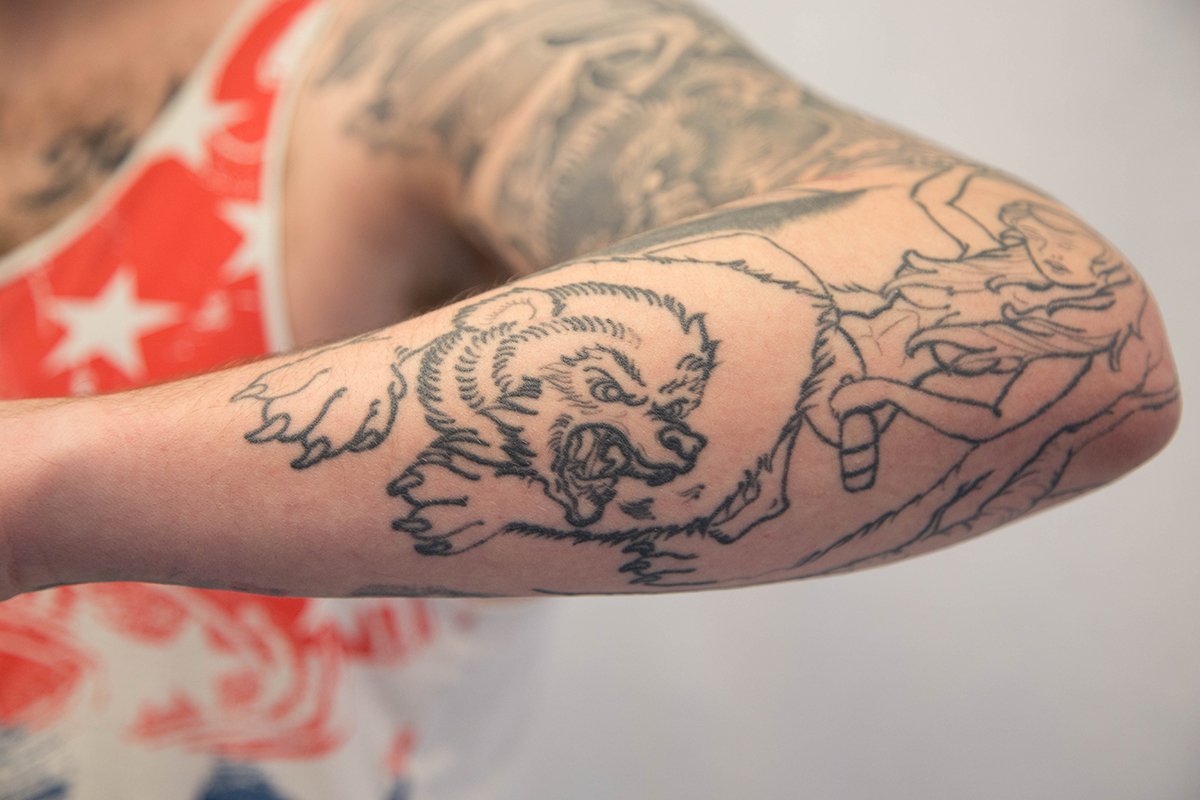
It all boils down to the way the individual in charge of hiring at a firm perceives — or dismisses — traditional historical connotations of inked skin. Regardless of changing opinions millennials themselves may have of tattoos, subsets of older generations remember a time when having a tattoo meant being a societal reject. And for now, that unfortunately impacts where you’ll work and who will employ you if you’ve got some ink and have certain career aspirations. As McNeely puts it, “You have imagine: if you work in a bank, one customer could be a young millennial who’s totally accepting of (tattoos), the next could be an 80-year-old grandmother who’s got very different concerns. You have be aware of the variety of customers — that’s a big determining factor, too.”
But even if there were no possible issues with the administration and potential removal of tattoos, some millennials will never be convinced to buy into tattoos.
“I’m just not a tattoo person,” says engineering student Maram Yousef. “And yeah, it’s definitely something that a lot of employers consider when they’re interviewing possible job candidates, so if I ever did get (a tattoo), it’d have to be something small and easy to hide.”
So, are millennials just experiencing a temporary tattoo high or will the mania die down to a dull roar? Will the next wave of young people known as Generation Z be as into the tattoo craze as their predecessors? Right now, with workplace attitudes toward tattoos changing to become more acceptable and more and more stars choosing to get tattooed, it seems that the pros of getting inked far outweigh the cons in the minds of four in 10 millennials — a statistic that might just keep going up if the current forecast holds. It’s enough to make skeptical old timers shake their fists at the way the world’s gone. But if the so-called obsession millennials seem to have with tattoos means more people who are connected to their identities, that’s more than a good enough reason for the trend to continue.
Trendy or not, tattoos will always be in style for the meaning they hold. “I’m still working on (my second sleeve),” Casedo laughs. “Definitely looking to get more in the future.”




